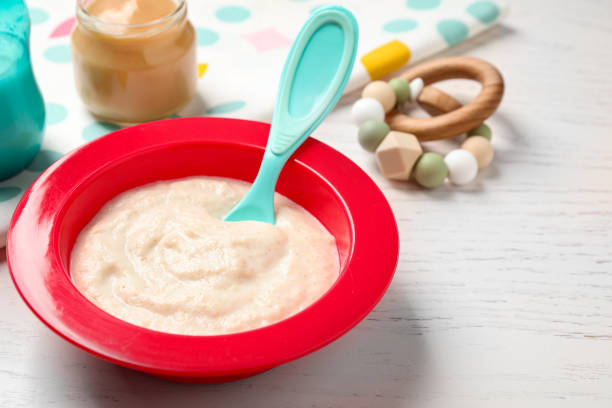As your baby embarks on the exciting journey of solid food introduction, you might find yourself overwhelmed by the vast array of
commercial baby food options available. While these products offer convenience, there’s something truly special about preparing your own
baby food. Not only do you have complete control over the ingredients, but you can also tailor the flavors and textures to suit your little one’s preferences.
1. Pasta & Broccoli: A Powerhouse for Strong Bones
Broccoli, a veritable superhero ingredient for strong bones, is packed with calcium, zinc, and vitamin K. Low levels of these nutrients have been linked to low bone density. To create this nutritious blend, simply puree steamed broccoli with pre-boiled pasta for a carbo boost. For enhanced cell growth and repair, add in green beans, flax seeds, or chickpeas. If your child is a bit older and more experienced with solids, you can serve this dish without pureeing, but be sure to chop the broccoli very finely.
2. Chicken & Rice: A Repurposed Delight

Image from iStock
Here’s a clever way to repurpose leftover chicken: puree it with rice for a digestible, nutritious baby meal! Mild flavoring is recommended if your child has shown positive reactions to it before. Chicken provides a healthy and filling option for growing kids, delivering essential nutrients for overall development. To elevate the health factor, opt for brown rice or another whole grain on hand.
3. Banana & Quinoa: A Protein-Packed Breakfast or Dessert
This blend is not only delicious but also packed with protein, fiber, calcium, iron, and folate, making it a nutritional powerhouse for strong bone development. Protein is crucial for strengthening the tiny muscles that support the skeletal structure. Puree quinoa with sweet bananas and creamy yogurt for a treat your little one will adore. Bananas are rich in potassium and gentle on the stomach, but moderation is key to avoid constipation.
4. Fish & Potatoes: A Brain-Boosting Combination
Fish is an exceptional source of complete protein, containing all nine essential amino acids. These brain-building fatty acids are essential for your child’s cognitive development. Introduce your baby to fish, starting with white-flesh varieties like flounder, haddock, and cod, which are more digestible and lower in allergens. Blend the fish with buttery potatoes for a creamy texture that your little one will find irresistible.
5. Baked Sweet Potato: A Simple Yet Nutritious First Food

Image from iStock
Adults know the health benefits of sweet potatoes: they’re packed with vitamins, antioxidants, and fiber. Your baby can reap these benefits too! A simple puree of baked sweet potato with a touch of water or your baby’s milk makes for a yummy and nutritious first food.
Tips for Preparing Homemade Baby Food
-
Choose fresh, ripe ingredients.
-
Steam or boil vegetables until soft.
-
Puree or mash to the desired consistency.
-
Store in airtight containers in the refrigerator for up to 48 hours.
-
Freeze for longer storage.
-
Introduce new foods one at a time to monitor for allergies.
-
Have fun experimenting with different flavors and combinations!
I hope these tips and recipes help you create delicious and nutritious baby food for your little one!